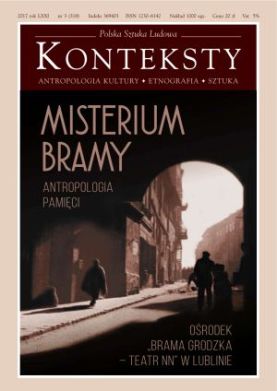Subwersywna moc prywatnych kolekcji fotografii. Żydzi w polskiej pamięci zbiorowej po upadku komunizmu
The Subversive Power of Private Photograph Collections. The Jews in Polish Collective Memory after the Fall of Communism
Author(s): Gil Pasternak, Marta ZiętkiewiczSubject(s): History, Fine Arts / Performing Arts, Jewish studies
Published by: Instytut Sztuki Polskiej Akademii Nauk
Keywords: photography; Jews; archive
Summary/Abstract: In 1994 the Jewish-Polish Shalom Foundation announced a photographic contest whose intention was to reconstruct the social and cultural histories of Polish Jews who lived in the geographical region of Poland before, during and after the Second World War. For this purpose the Foundation invited contributions from the public. Its initiative emerged shortly after the 1989 collapse of the communist regime in Poland, and alongside other similar projects that reflected the desire of Poland’s ethnic minorities to salvage their sociocultural histories – histories the communist government had virtually erased from the county’s formal historiography. In a short period of time the Foundation received more than seven thousand annotated photographs in response to its public appeal, most of which emanated from domestic photographic collections. As scholars interrogating domestic photography do not often have access to empirical data about the practices it entails, in this article we consider the Foundation photographic collection as a resource preserving invaluable information about the diverse uses and perceptions of photography in the sociocultural sphere. Yet, whereas existing scholarly literature in the field of photography studies tends to frame domestic photography with reference to affectionate familial behaviors allegedly common in democratic states, we introduce the Foundation collection as a case study that sheds light on domestic photographs created and maintained in a sociocultural environment that did not see democracy before 1989. Analyzing and discussing the various ways in which the photographs’ owners saw the photographs’ relationships with the broader politically unstable reality that has enclosed their production and preservation, our study diversifies some of the meanings and functions current literature often associates with domestic photographic collections.
Journal: Konteksty
- Issue Year: 318/2017
- Issue No: 3
- Page Range: 213-224
- Page Count: 12
- Language: Polish
- Content File-PDF

